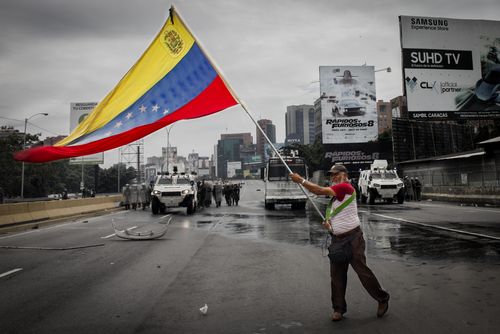
In a recent interview with CoinDesk, Venezuelan economist Aaron Olmos reaffirmed his belief that cryptocurrencies were the way forward in Venezuela. Hyperinflation and dollarization are key effects of the current monetary policy that have made it necessary for changes to occur.
Olmos, who is a professor and well-known cryptocurrency advocate, has promoted the benefits of cryptocurrencies for several years, and leads a program at IESA, a well-known business school, devoted to blockchain.
Bitcoin is seen as the likely replacement for the Bolivar because of its blue chip status and high level of accessibility. Although commonly criticized for its volatility, it ironically might be viewed as less volatile an risky that the Bolivar currently is.
Venezuela Today
The highly devalued Bolivar is the current official currency, but its continually declining value is causing compounding problems in Venezuela. Additionally, Venezuela’s current dependency on the price of the U.S. dollar (dollarization) creates a massive problem. In Olmos’ words:
“Everybody knows it: the Bolivar is our official currency in circulation, but the actual functional currency is the US dollar.”
Adoption of Bitcoin is already underway, which has helped some Venezuelans preserve their wealth, but the issue is in terms of what is actually being spent by citizens. The “bad money”, or the Bolivar, is the one mandated by law, which keeps things complicated. The situation will be resolved (in some sense) when the next election in Venezuela takes place. But as Olmos highlights, the best route could be the following:
“Given the conditions were we need an alternative element of trust, there’s nothing better than a cryptocurrency while an economic policy takes care of making the Bolivar regain value and recover its power.”
Small Shifts in Perception
Besides these high-level macroeconomic shifts that help Bitcoin, there are a bunch of other smaller reasons why Bitcoin may have a move up. For example, Twitter CEO Jack Dorsey recently alluded to the fact he bought $10,000 of Bitcoin every week.
In other news, a well-known trader (famous for making $183 million in a month) pointed out how with the Bitcoin halving coming up in 2020, some positive price action should be expected. Halving refers to the reward for mining Bitcoin and how it halves every 4 years or so. They are usually viewed as bullish events in the cryptocurrency world because of how they affect inflation and money supply. Money supply grows more slowly, so inflation stays down, and the price tends to go up as a result. In his words:
“Bitcoin has traditionally started pumping around one year on average before it’s halving date.”
Where Does this Take Bitcoin?
Combine all this information and you get the idea that only good things are coming for Bitcoin in the near future. Some are even going so far as to claim this will be the last year that the general population will be able to buy full Bitcoins. After that, because of price increase, only fractions of Bitcoins will be accessible to retail investors.
Considering the last pump brought Bitcoin’s price up to $20k and making the assumption that each bull market goes higher than the last, this could be considered a fair assertion. Although time will tell, $50k Bitcoin seems possible based on the new institutional money and stronger need for alternatives to fiat in the coming years.

